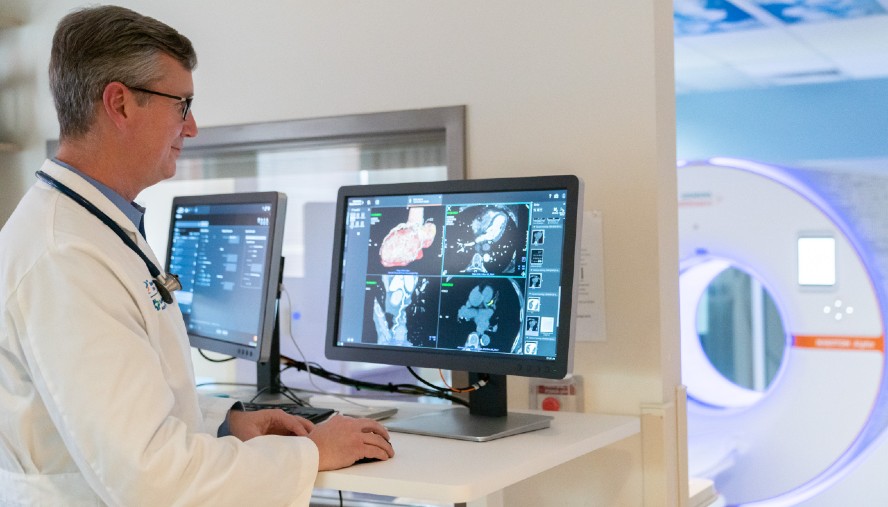A Better View of the Heart
New Cardiac Imaging Lets Doctors See Beating Hearts with Better Detail
Anyone who’s tried sports photography knows how hard it is to capture something in constant motion. And, for a long time, cardiologists were dealing with a similar problem — except that their highly animated subject was also encased by flesh and bone.

On average, the human heart beats 60-100 times per minute. Until recently, that pace limited doctors from taking high-resolution shots of the organ in action. However, as cardiologist Christopher Dyke, MD, explains, the new state-of-the-art magnetic resonance imaging (MRI) technology at National Jewish Health allows doctors and patients to see the heart as never before.
“Everybody knows what an MRI is. It's been around for decades,” said Dr. Dyke. “But MRIs are relatively new in cardiology. We can't tell the heart to stop beating for us take a picture, so it has taken a series of technological advances in the physics and design components of MRI to get us to the amazing images we see today."
The MRI is used to examine the structure and function of the heart, focusing on heart muscle in particular. “Especially in patients who have weak heart muscles, we can really distinguish potential causes for why their muscles are weak. This gets us to treatments earlier so they don't have as much difficulty,” explained Dr. Dyke.
Cardiac imaging opens the door to less reactive and more preventive medicine. According to Dr. Dyke, coronary health care used to focus on risk factors such as family history, preexisting conditions, and diet and lifestyle choices. Now doctors can catch the warning signs of fibrosis and plaque buildup by examining the heart before symptoms develop.
Imagine you have unexplained chest pain. Perhaps heart disease runs in your family. This new technology enables doctors to see the state of your heart in real time. These snapshots can ease your worries or resolve something that could become a serious health issue. According to the CDC, heart disease is the leading cause of death for the majority of Americans. So, learning about your risk early could very easily save your life.
New cardiac imaging is also useful for people who don’t present symptoms of heart trouble. Even when someone’s cholesterol levels appear normal, if scans reveal plaque buildup in the heart, doctors can act quickly to treat the issue.
This new window into the heart is not limited to cardiology. There are many diseases (such as cardiac sarcoidosis) that involve the heart. Testing patients with lung conditions can be challenging. For instance, stress testing and pharmaceuticals could aggravate conditions like asthma or COPD. Cardiac imaging allows doctors to bypass this obstacle and go straight to the source. For instance, the new photon-counting computerized tomography scanner recently acquired by National Jewish Health allows doctors to examine coronary arteries for blockages, assisting lung specialists by ruling out heart-related reasons for things like shortness of breath. So if a pulmonologist wants their patient to receive more well-rounded care, they can now coordinate with Dr. Dyke to assess the impact on heart health.
This versatility and precision make cardiac imaging a treasured tool in the battle for better health. As National Jewish Health incorporates this discipline into its network of care, specialists anticipate great things. “It's a totally different construct for the future of preventing heart disease,” said Dr. Dyke.
